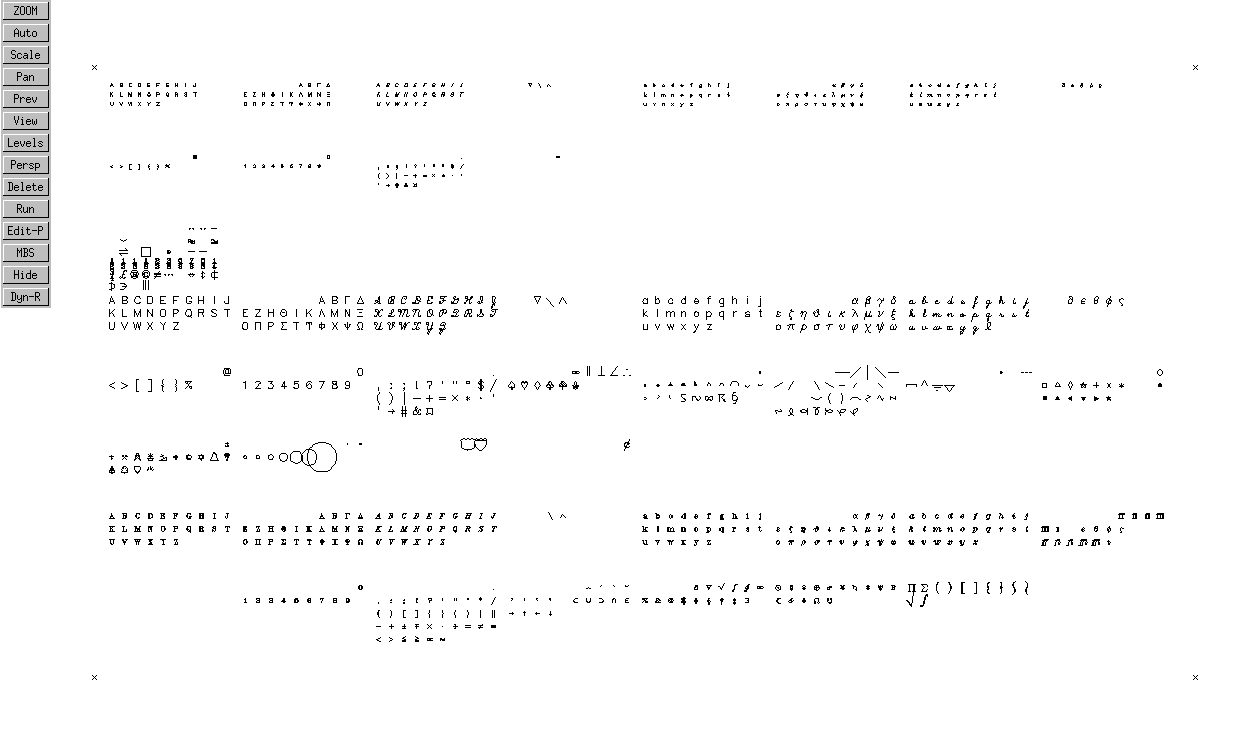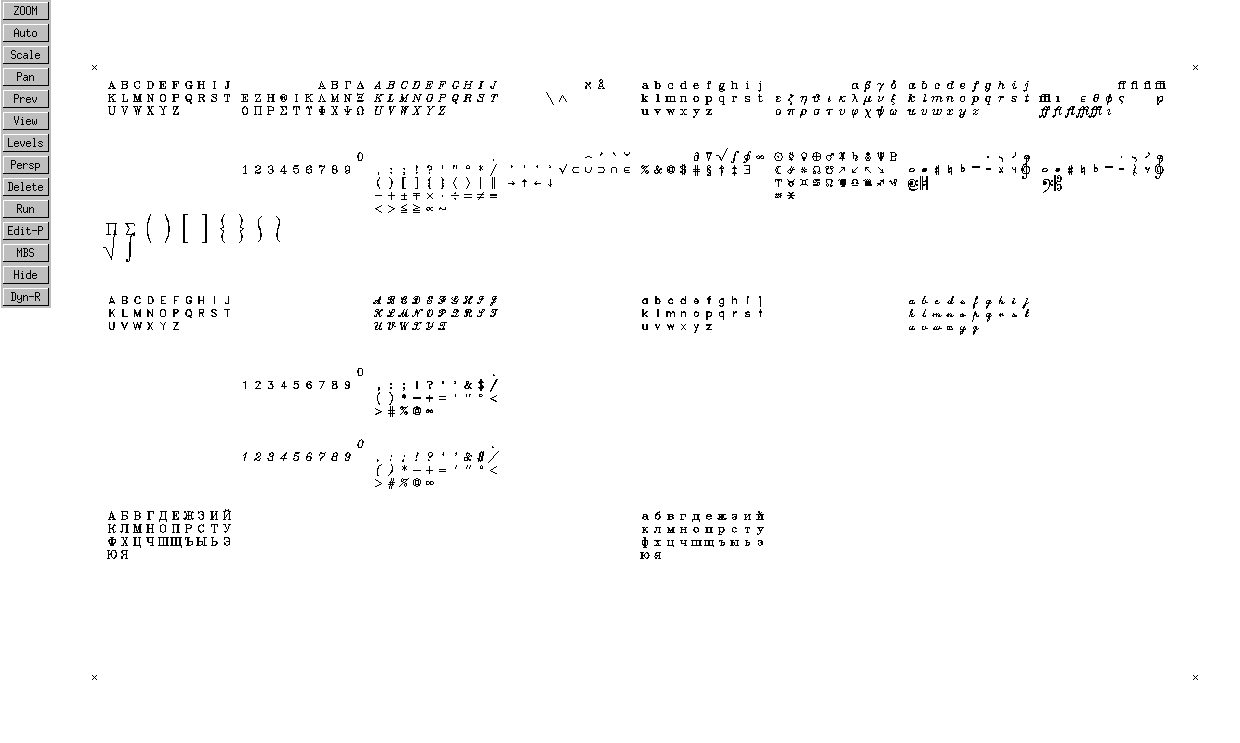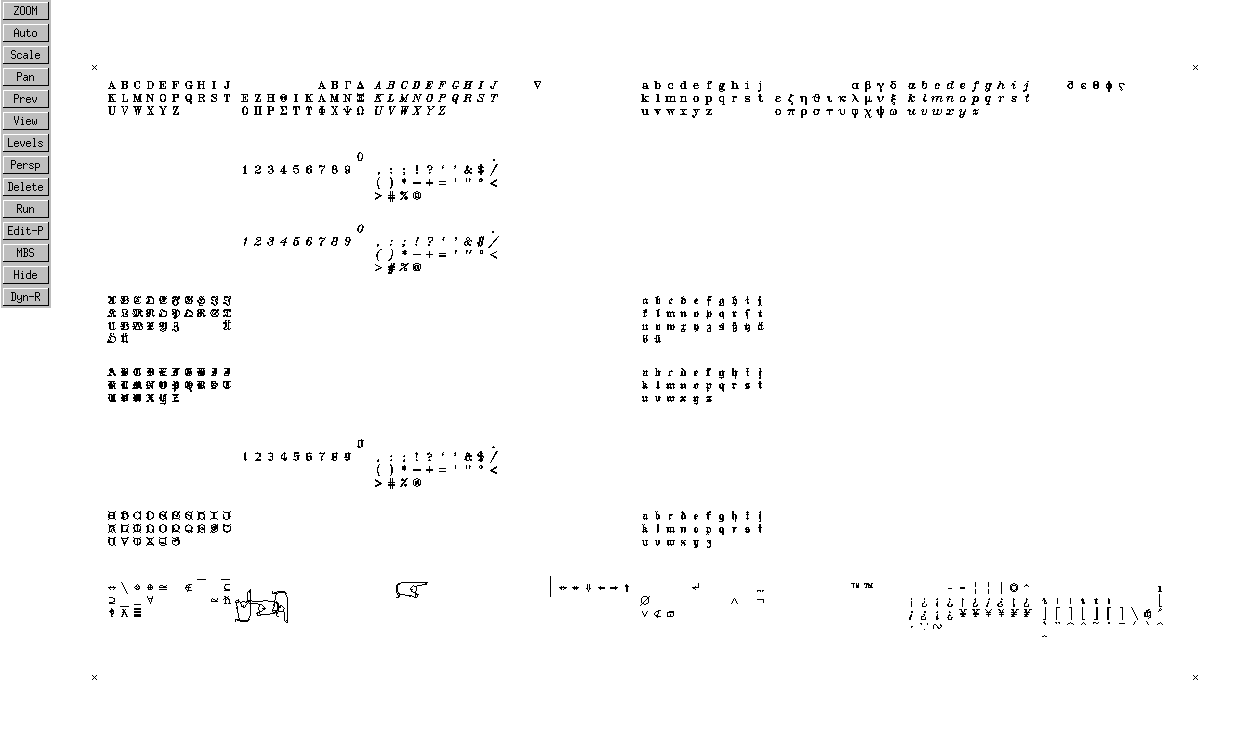
Here's a closer look at each of the "ranges" of glyphs. Below, for reference are the three big "tables" of all of the glyphs in glyph number order, divided into ranges. They're illegible (use the interactive VARKON version for legibility), but useful if you already have a feeling for the glyphs (which is what they are intended to give, which is a Catch-22). Go to any of the "Range" chapters listed in the Contents, above, for illustrations of the ranges themselves. Use the interactive VARKON version to see the "boxed" versions (or read the glyph data annotations) for further information about individual glyphs.



Note that the right-pointing hand is part of the same range (185) as the other pointing hands. They're just so large that their range takes up twice the space of a normal range.
The Hershey glyphs produced and distributed by Dr. Hershey are clearly in the public domain. The glyphs produced by others and distributed with the GNU Plotutils are, to the best of my understanding, also in the public domain. The glyph data as transformed and used here by me remain in the public domain as well.
The rest of this page is copyright © 2003-2005 by David M. MacMillan & Rollande Krandall.
Permission is granted to copy, distribute and/or modify copyrighted portions of this document under the terms of the GNU Free Documentation License, Version 1.2 or any later version published by the Free Software Foundation; with no Invariant Sections, no Front-Cover Texts and no Back-Cover Texts. A copy of the license is included in the file entitled "fdl.txt" (GNU Free Documentation License).
The computer programs here are also present as files (in the original distribution, at least) and are released, as indicated in those files, under the GNU General Public License Version 2 or (at your option) any later version. A copy of this license is included in the file entitled "gpl.txt" (GNU General Public License).
Note: Those portions of this document which are in the public domain, if any, may be copied freely. The distribution of these public domain portions is subject to all of the disclaimers of warranty and liability noted herein.
This work is distributed WITHOUT ANY WARRANTY; without even the implied warranty of MERCHANTABILITY or FITNESS FOR A PARTICULAR PURPOSE. See the GNU Free Documentation License for more details.
You should have received copies of the GNU Free Documentation License and the GNU General Public License along with this work; if not, write to the Free Software Foundation, Inc., 59 Temple Place - Suite 330, Boston, MA 02111-1307, USA.
This work is distributed "as-is," without any warranty of any kind, expressed or implied; without even the implied warranty of merchantability or fitness for a particular purpose.
In no event will the author(s), editor(s), or publisher(s) of this work be liable to you or to any other party for damages, including but not limited to any general, special, incidental or consequential damages arising out of your use of or inability to use this work or the information contained in it, even if you have been advised of the possibility of such damages.
In no event will the author(s), editor(s), or publisher(s) of this work be liable to you or to any other party for any injury, death, disfigurement, or other personal damage arising out of your use of or inability to use this work or the information contained in it, even if you have been advised of the possibility of such injury, death, disfigurement, or other personal damage.
CircuitousRoot & circuitousroot.com are service marks of
David M. MacMillan
&
Rollande Krandall.
Other trademark recognition.
Presented originally by CircuitousRoot.SM